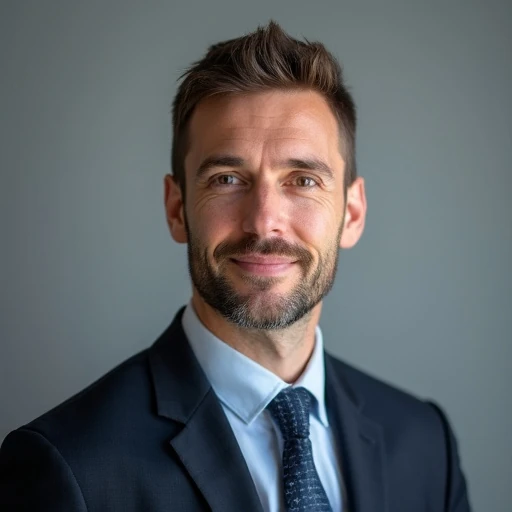Top real estate professionals, investors, and students gathered for the 31st annual FSU Real Estate TRENDS Conference, an event that has become a key forum for dissecting the forces shaping the industry. This year's discussions focused on large-scale urban development, exemplified by New York's Hudson Yards, and the rapidly growing real estate needs of Florida's aerospace sector.
With approximately 550 attendees, including about 165 students from several universities, the conference highlighted the critical link between academic training and real-world application. Leaders from major firms shared insights on capital markets, investor trends, and the complex strategies behind transformative projects.
Key Takeaways
- The conference brought together 550 industry leaders and students to analyze current real estate market conditions.
- A keynote presentation detailed the development of Hudson Yards, the largest private real estate project in U.S. history.
- A panel discussion explored the significant impact of Florida's burgeoning aerospace industry on local real estate markets.
- The event emphasized the importance of public-private partnerships and long-term strategic planning in major developments.
A Convergence of Industry and Academia
The FSU Real Estate TRENDS Conference serves as more than just a networking event; it is a vital bridge between current industry leaders and the next generation of professionals. This year's gathering included students from Florida State University, Florida A&M University, and the University of Wisconsin-Madison, whose real estate program is ranked No. 1 in the nation.
A significant component of the student experience was a case competition, which pitted teams from FSU and Wisconsin against each other. Adriana Gjergji, a senior real estate major on the winning team, noted the value of the experience. "It was fun to apply what we’ve learned in the classroom to a real-world situation," she said. "It was a great experience to challenge ourselves and be under pressure but also to be comfortable with the support of FSU’s real estate program."
Students also participated in a career fair, connecting directly with representatives from top real estate companies. This direct access to industry professionals is a cornerstone of the conference's mission to foster talent and prepare students for the complexities of the modern market.
The Hudson Yards Blueprint for Urban Transformation
A major highlight of the conference was the keynote presentation by Mike Gilbane, Managing Director of Related Fund Management for Related Companies. He provided an inside look at the development of Hudson Yards in New York City, a project that transformed a 28-acre Manhattan rail yard into a thriving mixed-use district.
From Failed Olympic Bid to Urban Landmark
The genesis of Hudson Yards can be traced back to New York City's unsuccessful bid for the 2012 Summer Olympics. The city's plan involved rezoning the rail yard and extending a subway line to the area. While the Olympic bid failed, the crucial decision to proceed with the subway extension created a unique development opportunity that Related Companies capitalized on, launching the project in 2014.
Gilbane explained how the project, which includes over 18 million square feet of commercial and residential space, was a lesson in long-term vision and risk management. Michael T. Fishman of Greenberg Traurig, who moderated the discussion, emphasized the project's complexity.
"This is truly building a city in the city. You want to think about it that way. It’s knowing the politicians. It’s knowing the entitlements. It’s putting the whole thing together as a long-term project that typically outlasts economic cycles."
Gilbane also shared insights into Related Companies' strategy, which he described as having a "long-term ownership mentality." This philosophy influences decisions from the selection of durable construction materials to providing personalized customer service as an owner-operator. He stressed the company's vertically integrated model, where development, construction, finance, and management are all handled in-house.
"We think if we can control the full supply chain, we’re going to be able to manage our destiny much better than others," Gilbane explained to the audience.
Florida's New Frontier Aerospace and Real Estate
Another key discussion shifted the focus from urban cores to a rapidly expanding sector in Florida: the aerospace industry. A dedicated panel explored the real estate strategies required to support this high-tech field and its profound economic benefits for the state.
Florida's Space Economy
Space Florida, the state's aerospace finance and development authority, has secured major agreements with industry giants like Amazon, Blue Origin, SpaceX, and Northrop Grumman, cementing the state's position as a global hub for space operations.
Eileen Vélez Vega, a strategic infrastructure director at Kimley-Horn and the panel's moderator, highlighted the industry's significance. "With major spaceports, Florida has become a hub for both public and private space operations," she stated. "These facilities are not only launching rockets into space but also propelling the state’s economy forward."
The panel discussed how the growth of space transportation infrastructure, including specialized seaports and airports, creates a ripple effect, driving demand for manufacturing facilities, research centers, and housing for a highly skilled workforce.
Chase Foster of FSU InSPIRE, a university initiative supporting the aerospace ecosystem, added that its work will initially focus on advanced manufacturing and high-speed wind-tunnel testing. This academic and research support is critical for developing the talent pipeline needed to sustain the industry's growth in the state.
Looking Ahead Long-Term Vision Required
The overarching theme of the conference was the necessity of long-term, strategic thinking in a capital-intensive industry. Whether developing a new urban district or building the infrastructure for a space-faring economy, success depends on navigating economic cycles, political landscapes, and technological shifts.
As speakers like Gilbane and Fishman emphasized, the most ambitious projects are those that anticipate future needs and are built to last. The engagement between seasoned professionals and aspiring students at the TRENDS conference ensures that this forward-looking perspective will continue to shape the real estate industry for years to come.





